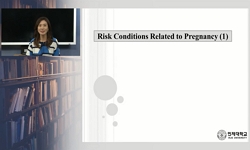Background: Pregnancy affects the course of Graves' Disease (GD), and patients who initially maintain euthyroid function into their middle trimester with minimum doses of antithyroid drugs become exacerbated after delivery. Even patients who are compl...
http://chineseinput.net/에서 pinyin(병음)방식으로 중국어를 변환할 수 있습니다.
변환된 중국어를 복사하여 사용하시면 됩니다.
- 中文 을 입력하시려면 zhongwen을 입력하시고 space를누르시면됩니다.
- 北京 을 입력하시려면 beijing을 입력하시고 space를 누르시면 됩니다.



출산에 따른 그레이브스병의 재발 및 관련이자 = The Postpartum Recurrence of Graves` Disease and its Condtributing Factors
한글로보기https://www.riss.kr/link?id=A19741468
-
저자
임창훈 (성균관대학교 외과대학 삼성제일병원 내과) ; 최현아 (성균관대학교 외과대학 삼성제일병원 내과) ; 한승석 (성균관대학교 외과대학 삼성제일병원 내과) ; 김해성 (성균관대학교 외과대학 삼성제일병원 내과) ; 이창욱 (성균관대학교 외과대학 삼성제일병원 내과) ; 정호연 (성균관대학교 외과대학 삼성제일병원 내과) ; 한기옥 (성균관대학교 외과대학 삼성제일병원 내과) ; 장학철 (성균관대학교 외과대학 삼성제일병원 내과) ; 박원근 (성균관대학교 외과대학 삼성제일병원 내과) ; 윤현구 (성균관대학교 외과대학 삼성제일병원 내과) ; 한인권 (성균관대학교 외과대학 삼성제일병원 내과)
- 발행기관
- 학술지명
- 권호사항
-
발행연도
2002
-
작성언어
Korean
- 주제어
-
KDC
511.000
-
등재정보
SCOPUS,KCI등재,SCIE
-
자료형태
학술저널
- 발행기관 URL
-
수록면
189-196(8쪽)
- 제공처
-
중단사유
※ 발행기관의 정책으로 인하여 개인 판매가 중단된 논문입니다. 구독기관 이용자는 [
 KISS] 홈페이지에서 원문을 이용해 주시기 바랍니다.
KISS] 홈페이지에서 원문을 이용해 주시기 바랍니다.
- 소장기관
-
0
상세조회 -
0
다운로드
부가정보
다국어 초록 (Multilingual Abstract)
Methods: The study subjects were recruited from pregnant women visiting our outpatient clinic for routine prenatal evaluations. 45 women previously diagnosed with GD, who had been treated and cured with hyperthyroidism, and were no longer taking any thyroid medications, were evaluated for 1 year post delivery.
Results: Among 45 patients, 20 (44.4%) developed thyroid disorders following delivery. Postpartum thyroiditis (PPT) developed in 8 patients (17.8%), and GD developed in 12 (26.0%). The onset of the PPT disease 3.1 ± 1.4 months following delivery, which was significantly earlier than the 6.7 ± 2.7 months required for the post delivery onset of GD (p=0.003). The TBII values, measured during the thyrotoxic state in each womaen, were negative in women with PPT and positive in 71.4% of women with GD (p=0.030). The duration of treatment for hyperthyroidism prior or pregnancy, the number of recurrences, and the time interval without treatment, were not associated with the development of postpartum thyroid disorders. Whereas, the mean number of past pregnancies for women who developed PPT was 3.9 ± 2.1, and was significantly higher than the 2.2 ± 1.7 for women developing no thyroid dysfunctions (p=0.044). In 13 women their initial onset of GD occurred within one year postpartum, 7 (53.8%) having had a recurrence, which was significantly higher than in women whose disease onset occurred unrelated to delivery (5 of 32 women: 15.6%).
Conclusion: Women with GD developed postpartum thyroid dysfunctions in 44.4% of cases. Women whose initial disease onset occurred within one year postpartum had higher recurrences of GD, and women who developed PPT had a history of higher gravidity compared to the euthyroid women postpartum. Therefore, if women with GD develop postpartum thyroid dysfunctions, the diagnosis should be made, and a treatment modality planned, following careful considerations of the patients' past obstetric history, changes in clinical manifestations and the TBII values
Background: Pregnancy affects the course of Graves' Disease (GD), and patients who initially maintain euthyroid function into their middle trimester with minimum doses of antithyroid drugs become exacerbated after delivery. Even patients who are completely cured, requiring no treatment during pregnancy, can relapse after delivery. In this study, we examined the postpartum changes in the thyroid functions of patients with GD, and attempted to determine the factors contributing to these changes.
Methods: The study subjects were recruited from pregnant women visiting our outpatient clinic for routine prenatal evaluations. 45 women previously diagnosed with GD, who had been treated and cured with hyperthyroidism, and were no longer taking any thyroid medications, were evaluated for 1 year post delivery.
Results: Among 45 patients, 20 (44.4%) developed thyroid disorders following delivery. Postpartum thyroiditis (PPT) developed in 8 patients (17.8%), and GD developed in 12 (26.0%). The onset of the PPT disease 3.1 ± 1.4 months following delivery, which was significantly earlier than the 6.7 ± 2.7 months required for the post delivery onset of GD (p=0.003). The TBII values, measured during the thyrotoxic state in each womaen, were negative in women with PPT and positive in 71.4% of women with GD (p=0.030). The duration of treatment for hyperthyroidism prior or pregnancy, the number of recurrences, and the time interval without treatment, were not associated with the development of postpartum thyroid disorders. Whereas, the mean number of past pregnancies for women who developed PPT was 3.9 ± 2.1, and was significantly higher than the 2.2 ± 1.7 for women developing no thyroid dysfunctions (p=0.044). In 13 women their initial onset of GD occurred within one year postpartum, 7 (53.8%) having had a recurrence, which was significantly higher than in women whose disease onset occurred unrelated to delivery (5 of 32 women: 15.6%).
Conclusion: Women with GD developed postpartum thyroid dysfunctions in 44.4% of cases. Women whose initial disease onset occurred within one year postpartum had higher recurrences of GD, and women who developed PPT had a history of higher gravidity compared to the euthyroid women postpartum. Therefore, if women with GD develop postpartum thyroid dysfunctions, the diagnosis should be made, and a treatment modality planned, following careful considerations of the patients' past obstetric history, changes in clinical manifestations and the TBII values
동일학술지(권/호) 다른 논문
-
G_Sα 돌연변이 유전자를 영구히 발현하는 GH3 세포주에서 소마토스타틴 수용체 유전자 및 G_i2α, pit-1α 유전자의 발현
- 대한내분비학회
- 박철영
- 2002
- SCOPUS,KCI등재,SCIE
-
건강검진 수진 여성에서 초음파검사를 이용한 갑상선결절의 유병률
- 대한내분비학회
- 임창훈
- 2002
- SCOPUS,KCI등재,SCIE
-
- 대한내분비학회
- 오일환
- 2002
- SCOPUS,KCI등재,SCIE
-
- 대한내분비학회
- 최원식
- 2002
- SCOPUS,KCI등재,SCIE












